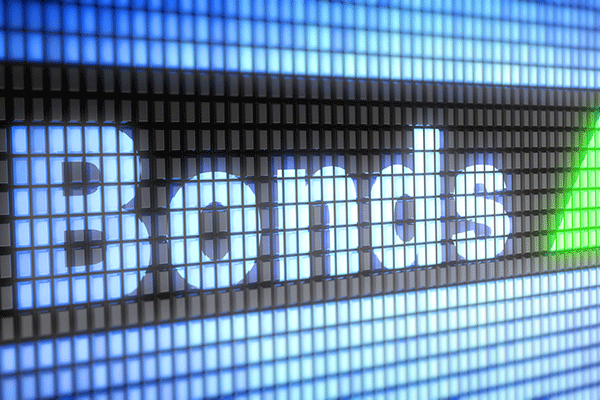Bond Watch: why 2024 may be a bad year for defaults
2nd June 2023 11:28
by Sam Benstead from interactive investor
Sam Benstead breaks down the latest news affecting bond investors.

Welcome to interactive investor’s ‘Bond Watch’ series, covering the latest market and economic news – as well as analysis – that is relevant to bond investors.
Our goal is to make the notoriously complicated world of bond investing simpler, by analysing the week’s most important news and distilling it into a short, useful and accessible article for DIY investors.
- Invest with ii: Investing in Bonds | Free Regular Investing | Open a SIPP
Here’s what you need to know this week.
An end to the ultra-low default world?
Worsening economic conditions will increase the rate at which bonds default, according to Deutsche Bank.
Its analysts reckon that American high yield, US direct loan, and European speculative grade default rates will likely peak at 9%, 11.3%, and 5.8% in the final months of 2024.
After that, there is unlikely to be a return to the ultra-low default world of the last 20 years as funding conditions normalise, Deutsche Bank argues.
This won’t be a 2008 style collapse, but rather a typical default period of a boom to bust cycle, it says.
- Bond Watch: UK inflation drop is not the good news it seems
- Benstead on Bonds: are bonds now the only game in town for income?
Jim Reid, of the firm, said: “The tightest Federal Reserve and European Central Bank policy in 15 years is running into elevated corporate leverage built upon stretched profit margins. This is especially true in the leveraged loan market, where LBO leverage was juiced higher year after year (after year) by zero rates and central bank QE.”
They conclude that yields will rise and bond investors could have a better entry point over the next 12 months.
EU inflation drops more than expected
Inflation in the 20 European Union nations dropped to 6.1% in May, from 7% in April, ahead of analyst forecasts of a 6.3% annual inflation rate.
Core inflation, which strips out volatile food and energy costs, fell from 5.6% to 5.3%, in a sign that inflation was on a trend lower.
This compares favourably with UK inflation figures, where headline inflation fell from 10.1% in the year to March, to 8.7% in the year to April. While a move in the right direction, investors were spooked by a rise in core inflation of 6.8%, up from 6.2% in March.
UK borrowing costs are greater than for many European economies. The 10-year gilt yields 4.1%, while the Spanish 10-year pays 3.3%, French pays 2.8% and German pays 2.3%. Lower yields indicate lower borrowing costs on new debt issued.
- Benstead on Bonds: best and worst bond sectors since rates began rising
- Day in the life of a fund manager: Vanguard's Mohneet Dhir
How can government bond investors also be sustainable?
Three-fifths of the global bond market is made up of sovereign bonds – those issued by governments. However, it is a part of the bond market not associated with sustainable investing.
However, more than 40 countries issue green bonds now, where the funds are tied to spending that helps the environment or society.
Ryan Myerberg, a fixed income fund manager at Brown Advisory, says that looking at the sustainability credentials of a country issuing bonds can be key to generating fixed income returns.
- The ‘cheap’ investment trusts tipped as buys
- The eight income investment trust heavyweights: how sustainable are the dividends?
His investment process incorporates environmental, social and governance (ESG) considerations.
He gives the example of Indonesia, which is a big coal exporter. He said they score well on education, with 20% of government spending going on it, which will allow them to transition to more developed economy and phase out coal by 2030.
“We are comfortable about the plans that are in place, but it did not look good at first glance,” he said.
Myerberg is less keen on Brazilian bonds, due to poor environmental factors, as well as corruption issues.
These articles are provided for information purposes only. Occasionally, an opinion about whether to buy or sell a specific investment may be provided by third parties. The content is not intended to be a personal recommendation to buy or sell any financial instrument or product, or to adopt any investment strategy as it is not provided based on an assessment of your investing knowledge and experience, your financial situation or your investment objectives. The value of your investments, and the income derived from them, may go down as well as up. You may not get back all the money that you invest. The investments referred to in this article may not be suitable for all investors, and if in doubt, an investor should seek advice from a qualified investment adviser.
Full performance can be found on the company or index summary page on the interactive investor website. Simply click on the company's or index name highlighted in the article.